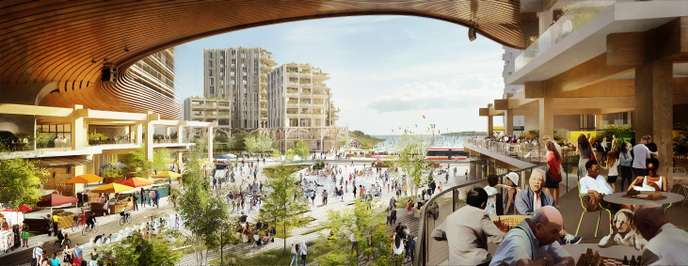After months of tension, the Canadian city decided, Thursday, October 31, to continue its partnership with the digital giant, which revised its claims downward.
Subscribers article

At the cost of a serious downward revision of its claims, Google remains in the game in Toronto. The Canadian city decided on Thursday, October 31, not to break its tumultuous engagement with the digital Goliath, intended to give birth to the first futuristic eco-neighborhood designed by one of the giants of the Web. This spectacular project, announced with great fanfare in October 2017, had appeared more and more fragile in recent months, as both the opposition of many residents and the appetite of Sidewalk Labs, sister company of Google, grew stronger. .
"Sidewalk Labs listened to our concerns and those of the public, and confirmed that it would make significant changes to its proposal," said Waterfront Toronto president Stephen Diamond on Thursday.
Waterfront Toronto, the public authority that brings the city, the province of Ontario and the federal government together to redevelop the brownfields on Lake Ontario, chose two years ago to trust this very young subsidiary of Alphabet, specialized in urban development. At the head of this branch "smart cities": Dan Doctoroff, a businessman who was the great manitou of urban planning in New York in the 2000s, alongside Mayor Michael Bloomberg.
A true "digital layer"
His mission in Toronto: imagine on the five-hectare parcel of Quayside, very close to downtown, a 21st century neighborhoode century, at the forefront of urban planning, architecture and innovation, at the time of the climate emergency and artificial intelligence.
On the menu of the city according to Google, appear on computer graphics of high buildings built of wood, a mix of "affordable" housing, shops and offices, bike paths heated in winter to clear the snow, autonomous cars and robots evacuating waste and ensuring deliveries via underground tunnels … Above all, the project imagines the creation of a real "digital layer" doubling the physical layout, consisting of a myriad of sensors massively collecting all possible data imaginable to feed management of the neighborhood and its urban services, with the help of artificial intelligence systems.

Over the months, collectives and elected officials have expressed serious concerns about the confidentiality and possible commercial use of this data. A climate of suspicion reinforced by the resignation of several heads of digital privacy issues recruited by Sidewalk Labs pledge of goodwill.




